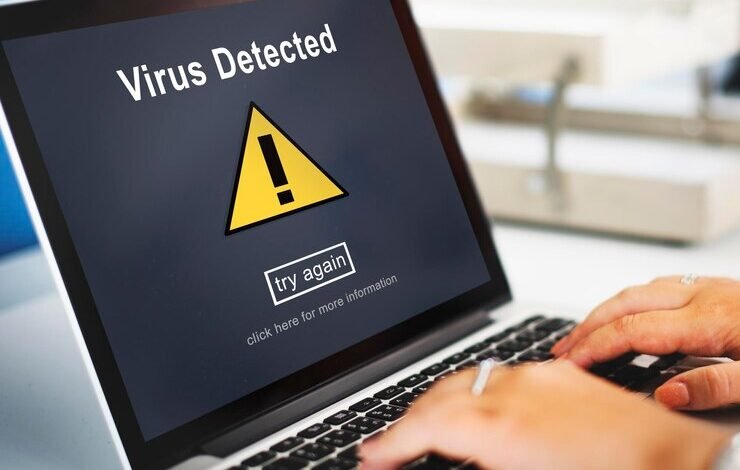The Definitive Guide to KB5028980 Not Applicable on 2012

In the fast-paced world of IT, staying ahead of software updates and patches is crucial for maintaining system security and performance. However, not every update applies to all systems, as is the case with the kb5028980 update and Windows Server 2012. Understanding why this particular update isn’t applicable to Windows Server 2012 can save IT professionals and system administrators valuable time and resources. This blog post will guide you through the intricacies of kb5028980, its relevance, and how you can effectively manage updates and maintain security on your Windows Server 2012 systems.
Unpacking KB5028980 Not Applicable on 2012 and Its Relevance in IT
The kb5028980 update has garnered significant attention in the IT community due to its critical security enhancements. Designed to address vulnerabilities and improve overall system robustness, this update is part of Microsoft’s ongoing commitment to safeguarding user data against emerging threats. For IT professionals, understanding the scope and impact of such updates is essential to ensure seamless integration and continued system efficiency.
While the update provides vital security improvements, it’s essential to recognize that not all updates are one-size-fits-all. Certain updates are tailored for specific versions of Windows Server, reflecting varying infrastructure needs and potential vulnerabilities. This specificity highlights the importance of being well-informed about applicable updates to optimize system protection and performance.
Given the evolving nature of cyber threats, staying updated on the latest patches ensures that systems are shielded from vulnerabilities. This proactive approach to cybersecurity underscores the importance of updates like kb5028980 in maintaining a secure IT environment, minimizing the risk of data breaches and system failures.
Why KB5028980 Not Applicable on 2012
Despite the critical nature of kb5028980, it does not apply to Windows Server 2012, leaving some users puzzled. The primary reason lies in the underlying architecture and support lifecycle differences between Windows Server versions. Windows Server 2012, part of the older generation of server operating systems, may have unique security and compatibility requirements that differ from those addressed by kb5028980.
Microsoft’s update strategy often prioritizes the latest and most widely used versions of its software. This focus ensures that resources are allocated efficiently, targeting systems with the largest user base and the greatest need for security enhancements. Consequently, certain updates may bypass older versions like Windows Server 2012, which might not share the same vulnerabilities or benefit from identical improvements.
Additionally, the end-of-life status of some software versions means that they no longer receive updates or support. While Windows Server 2012 is still supported for some time, its lifecycle is nearing its end. This reality makes it crucial for users to plan for future migrations and updates to newer, more secure versions of Windows Server.
Navigating Updates and Patches for KB5028980 Not Applicable on 2012

For IT professionals managing KB5028980 Not Applicable on 2012, understanding the patch management process is vital. This understanding helps ensure that systems remain secure while running optimally. One effective strategy is to establish a regular schedule for checking available updates and patches. By doing so, administrators can quickly identify any critical updates specific to their system and determine the best course of action.
Leveraging Microsoft’s Update Catalog is another valuable tool in the process. This catalog allows users to search for specific updates and patches tailored to their system version, ensuring they only apply relevant updates. By utilizing this resource, system administrators can avoid unnecessary installations that may disrupt system performance or cause compatibility issues.
Testing updates in a controlled environment before deploying them on live servers is also a best practice. This approach allows users to identify potential conflicts or issues with other software, ensuring a smoother integration process. Effective testing minimizes downtime and maintains system stability, reducing the risk of operational disruptions.
Best Practices for Managing KB5028980 Not Applicable on 2012
Maintaining security on Windows Server 2012 involves adopting best practices that enhance system protection and optimize performance. An essential aspect of this process is regularly reviewing and applying security patches as they become available. Staying on top of these updates ensures that systems are equipped to handle emerging threats and vulnerabilities.
Implementing centralized patch management tools can streamline the update process. Tools like WSUS (Windows Server Update Services) enable administrators to manage and deploy updates across multiple servers efficiently. This centralized approach simplifies the task of maintaining system integrity and reduces the administrative burden on IT teams.
Additionally, periodic system audits can help identify potential vulnerabilities and configuration issues that may affect security. Regular audits allow administrators to assess system performance, ensure compliance with security standards, and address potential risks proactively. This ongoing evaluation process is key to maintaining a secure and efficient IT infrastructure.
Future Implications and Security Recommendations KB5028980 Not Applicable on 2012
As the end-of-life date for Windows Server 2012 approaches, users must consider future implications and plan for migrations to newer versions. Transitioning to a more recent server operating system ensures access to ongoing updates, enhanced security features, and improved performance. This proactive approach lays the foundation for a resilient IT infrastructure capable of adapting to evolving security challenges.
Staying informed about the latest developments in IT security and update strategies is essential for system administrators. Engaging in industry forums, subscribing to relevant news sources, and participating in training sessions can provide valuable insights into emerging trends and technologies. This knowledge equips administrators with the tools needed to make informed decisions and maintain robust security postures.
Ultimately, fostering a culture of continuous improvement and adaptation is crucial for IT professionals managing Windows Server environments. By prioritizing security and system performance, organizations can safeguard their data and operations against potential threats, ensuring their continued success in an increasingly digital world.
Conclusion The Significance of Staying Informed
understanding the applicability of updates like kb5028980 is crucial for IT professionals managing Windows Server 2012. By recognizing the unique requirements of their systems and implementing best practices for update management, administrators can maintain security and performance effectively. Future planning and staying informed about emerging trends further reinforce the resilience of IT infrastructures.
For those looking to explore more about managing Windows Server updates, consider leveraging resources like Microsoft’s Update Catalog and engaging with industry forums. Stay proactive, stay informed, and safeguard your systems against the challenges of the digital landscape.




